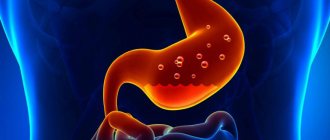Diabetes mellitus is what we call an endocrine disease, which is characterized by the following symptoms:
- Seriously impaired metabolism.
- The body loses its ability to metabolize sugar (i.e., glucose), causing its level in the blood to increase.
Glucose is the main source of energy for the body's cells, but it itself is not able to enter them. Insulin, a pancreatic hormone, helps her with this. However, diabetes also has sign number three:
- The pancreas stops producing insulin completely or partially. This is why people with diabetes must take subcutaneous insulin injections.
Diabetes mellitus type 1
Type 1 diabetes mellitus (insulin-dependent diabetes) occurs due to the direct destruction of pancreatic cells that produce the hormone insulin. Due to a decrease in the number of beta cells of the islets of Langerhans, a decrease in the concentration of insulin in the blood occurs. Insulin deficiency leads to disruption of the flow of glucose from the blood into the cells of the human body. A strange situation arises - there is a lot of glucose in the blood of a patient with type 1 diabetes, and the cells are “starving”. Cell destruction occurs due to aggression of the patient’s own immune system against the islets of Langerhans, or due to exposure to viral factors, intoxication with harmful substances, damage to pancreatic tissue due to the development of tumors in it or due to injury, removal of pancreatic tissue during surgery. In the immune form of diabetes, heredity is important - if one of the parents has diabetes, the likelihood of its occurrence in children is significantly increased compared to the average risk in the population. Cell destruction is irreversible, so it is impossible to cure type 1 diabetes. The only way to correct the situation is to administer insulin, which is still possible only by parenteral (injection) route. Insulin preparations for oral administration have not yet been created.
Diabetes mellitus type 1
usually manifests itself in childhood or adolescence. The onset of the disease is usually rapid, with the development of ketoacidosis and a significant increase in blood glucose levels. Patients often find out about their illness when they enter the intensive care clinic. Treatment begins immediately with the administration of insulin. There are no other treatments for type 1 diabetes; delay in prescribing therapy can lead the patient to rapid death due to diabetic coma.
In the treatment of type 1 diabetes mellitus, the insulin preparations used and the schedule for their administration are important. The quality of diabetes compensation improves with the use of automated insulin pumps that dose insulin according to a pre-prescribed program.
Bibliography
- Alisheva, E.K. Methods for diagnosing insulin resistance / E.K. Alisheva, E.I. Krasilnikova, E.V. Shlyakhto // Arterial hypertension. - 2002. - No. 1. - P. 29-34.
- Vydrych, A.N. The state of some parts of the endocrine system in men with diabetic nephropathy / A.N. Vydrych, S.B. Shustov // Vestn. Ross. Military honey. acad. - 2008. - No. 1 (21). — P. 12-15.
- Danilishina, V.S. / V.S. Danylyshina, V.L. Kushnir // Ter. arch. - 1984. - No. 10. - P. 86-88.
- Kulikov, V.Yu. / V.Yu. Kulikov, L.I. Kolesnikova, L.V. Molchanov // Issue. honey. chemistry. - 1976. -T. 22, No. 5. - P. 617-620.
- Methods of biochemical research / ed. M.I. Prokhorova // - L., 1982. - 272 p.
- Perova, N.V. Metabolic syndrome: pathogenetic relationships and directions of correction / N.V. Perova, V.A. Metelskaya, R.G. Oganov // Cardiology. - 2001. - No. 3. - P. 27 - 32.
- Pokrovsky, A.A. Biochemical research methods in the clinic / A.A. Pokrovsky. - M.: 1969. - 85 p.
- Tvorogova, M.G. Insulin resistance and methods of its diagnosis / M.G. Tvorogova, K.N. Yaskova, I.E. Chazova // Laboratory Medicine - 2003 - No. 6. - P. 48 - 52.
- Lohr, E. W. Methoden der enzymatischen Analyze. / EW Lohr, HD Waller, HU Bergmeyer //Weinheim - 1974. - Bd 1. - P. 673.
- Reaven, GM Introduction. The role of insulin resistance in the pathogenesis and treatment of noninsulin - dependent diabetes mellitus. / GM Reaven //Amer. J. Med. - 1983. - Vol. 74. - P. 1-2.
Diabetes mellitus type 2
Diabetes mellitus type 2
accompanied by normal or increased insulin production. The cause of the development of the disease is the untimely entry of insulin into the blood, as well as a decrease in the sensitivity of the patient’s body cells to insulin. In type 2 diabetes, there is usually enough insulin in the blood (or its level is even increased), but the cells “do not sense it”, and glucose cannot move from the blood into the cells. Impaired insulin sensitivity is referred to as insulin resistance.
For type 2 diabetes mellitus
Insulin deficiency is not quantitative in nature (lack of insulin production), but qualitative in nature (insufficient effect of insulin). Even if there are sufficient or increased concentrations of insulin in the blood, it does not work enough. The reasons for poor insulin effectiveness can vary.
Some patients lose sensitivity of cell surface receptors to insulin. The body's cells lose the ability to bind insulin to their surface receptors because these receptors are damaged. Insulin cannot activate receptors on the surface of cells, and they, in turn, cannot activate the mechanism for the absorption of glucose into the cell. This form of type 2 diabetes is often called “fat diabetes” because it occurs more often in patients with increased body weight.
It also happens that defective insulin is produced, not suitable for normally formed receptors. In this case, the receptors on the surface of the cells are completely normal, but insulin cannot contact them because it has the wrong structure. This form of type 2 diabetes is called “skinny diabetes.”
One of the main reasons for the development of type 2 diabetes is heredity - usually one of the blood relatives of a person with diabetes has the same disease. Obesity also plays an important role in the development of type 2 diabetes. Type 2 diabetes mellitus is much more widespread than type 1 diabetes - it is detected in 2-10% of the population. Type 2 diabetes is treated not with insulin, but with drugs that increase the sensitivity of cells to insulin. The use of insulin in the treatment of type 2 diabetes is also possible, but it is used relatively rarely, only in cases of resistance to glucose-lowering drugs.
Diabetes mellitus type 2
develops less acutely than type 1 diabetes. Symptoms of type 2 diabetes are less pronounced, so the patient often does not notice them immediately, which leads to a delay in diagnosing diabetes and late initiation of treatment. Meanwhile, timely diagnosis of type 2 diabetes mellitus is very important, since only in the early stages is it possible to effectively prevent the development of complications. The insidiousness of diabetes lies in the fact that it is in the early stages, when treatment can be very effective, that patients most often do not feel their disease and are not concerned about its treatment, so it is quite difficult to persuade them to make drastic lifestyle changes and take the necessary medications. At the stage of development of complications, when the quality of life begins to deteriorate significantly, patients with type 2 diabetes are ready to undergo treatment, but this treatment is already less effective.
For both types of diabetes, the most important part of treatment is following a proper diet.
In addition to diabetes mellitus types 1 and 2, there are several less common types of this disease.
Causes of the disease: what is the difference between type 1 and type 2?
The two types of diabetes have different causes. Why type 1 develops is still unknown. Scientists believe that this disease is of an autoimmune nature. The causes of a malfunction due to which the immune system attacks pancreatic cells may be genetic disorders or infections. The risk of this form of diabetes is higher in people who had mumps or rubella in childhood.
Heredity also plays an important role in the development of type 2 diabetes: the likelihood of the disease is higher if it has already been identified in one of your close relatives. But there are other factors that can provoke such a pathology:
- unhealthy diet;
- lack of sufficient physical activity;
- excess body weight;
- smoking;
- concomitant diseases, for example, pathologies of the heart and blood vessels or arterial hypertension.
Type 2 diabetes is often diagnosed in women who have polycystic ovary syndrome or are going through menopause. The risk of the disease is high if signs of gestational (temporary) diabetes appear during pregnancy.
MODY-diabetes
MODY diabetes is caused by a genetic defect that interferes with the secretion of insulin by the beta cells of the islets of Langerhans in the pancreas. MODY diabetes is not very common - about 5% of diabetic patients have this form of the disease. The onset of the disease usually occurs at a fairly early age. This type of diabetes mellitus is treated with the use of insulin, but to achieve optimal blood glucose levels, the patient requires low doses of insulin. Compensation for this type of diabetes is achieved quite easily. Figuratively speaking, MODY diabetes occupies a “middle” position between type 1 and type 2 diabetes.
What is the difference between treatment for type 1 and type 2 diabetes?
One of the most important differences between the two types of disease is the mechanism of treatment. In type 1 diabetes, little or no insulin is produced in the body, so it must be supplied from outside. To do this, a person must inject himself with insulin throughout his life with the frequency and dosage that is necessary for the normal processing of glucose.
With type 2 diabetes, there are several more options for treatment and maintaining good health. In this case:
- Sometimes following nutritional rules is enough;
- in some situations, tablets that lower blood glucose levels are prescribed;
- It happens that over time you have to switch from tablet drugs to injections.
Regardless of the type of diabetes, constant monitoring of blood sugar levels is necessary. To do this, there is no need to go to the clinic; it is enough to acquire a home device for such measurements. It is called a glucometer and is easy to use and highly accurate. How often to measure, whether to do it before or after a meal, how to react to increased or decreased readings - all these nuances must be clarified with your doctor.
Complications and diagnosis of the disease
Despite the different causes and mechanisms of development of diabetes mellitus, the complications of both types of disease are approximately the same. Without proper treatment, supportive care, and a healthy lifestyle, the disease leads to damage to almost all body systems, most often the organs of vision, kidneys, central nervous system, musculoskeletal system, up to diabetic coma. The similarity is also that with any type of diabetes, all these dangers can be prevented with a reasonable approach.
Timely diagnosis plays an important role in the treatment of diabetes. If type 1 of the disease mainly manifests itself with obvious signs, then with type 2 you may not know for a long time that dangerous changes are occurring in the body. That is why it is so important to undergo regular medical examinations, which must include a blood sugar test, and if symptoms are present, additional studies to clarify the diagnosis.
How does lifestyle change with two types of diabetes?
For both types of diabetes, patients are advised to adjust their lifestyle:
- ensure regular physical activity;
- adhere to nutritional rules;
- to refuse from bad habits;
- undergo routine medical examinations;
- follow the doctor's recommendations.
But with type 2 diabetes, more attention is paid to body weight. The fact is that the disease develops more often in overweight people, so this factor is considered one of the provocateurs of the disease. But that's not all: extra pounds interfere with the normal functioning of insulin, both your own and those supplied with medications. Research confirms that losing weight helps lower blood sugar levels. Based on this, for type 2 diabetes and excess weight, a low-calorie diet is prescribed.
Sweet disease from a hard life
Diabetes mellitus is a disease caused by a lack of insulin, a pancreatic hormone. Diabetes mellitus manifests itself in increased blood sugar levels (normal 3.3-5.5), the appearance of sugar in the urine, and metabolic disorders. Diabetes mellitus is classified into two types: Type I diabetes mellitus - insulin-dependent. The first type of diabetes mellitus develops when up to 90% of pancreatic cells die due to viral or autoimmune damage. As a result, insulin is not produced. Type I diabetes affects people at a young age. Type II diabetes mellitus is non-insulin dependent. The second type of diabetes mellitus develops as a result of impaired sensitivity of body tissue cells to insulin. Insulin is produced in the body, even in increased quantities, but cannot perform its functions, since the cells “do not listen to it.” Type II diabetes mellitus is hereditary. It usually affects people over 40 years of age, especially those who are prone to obesity. Symptoms and course The main symptoms of the development of diabetes mellitus are the appearance of severe thirst and an increase in the amount of urine (up to 3-5 liters per day). For diagnosis, a blood sugar test is performed. Type I diabetes develops rapidly. Its signs are sudden weight loss (up to 10-15 kg per month), weakness, fatigue, and the smell of acetone from the mouth. If treatment is not started in time, diabetic coma develops, which leads to death. In type II diabetes, the disease develops slowly. Characteristic symptoms develop gradually and can manifest themselves in the form of thirst, dry mouth, itching, and pustular skin lesions. Diabetic coma occurs extremely rarely. Complications of Diabetes Mellitus Diabetes mellitus has very serious complications. High blood sugar levels lead to the destruction of capillaries - microvessels in various organs, which disrupts their blood supply and functioning. As a result, cataracts can develop, hemorrhages occur in the retina of the eyes, and blindness occurs. Diabetes also affects the kidneys, which leads to the development of chronic renal failure and uremia. When capillaries in the vessels of the lower extremities are destroyed, trophic ulcers appear on the legs, and gangrene of the fingers and feet develops. Neuropathy may develop. Its symptoms are pain in the legs, followed by loss of skin sensation. Men develop impotence. Since patients suffering from diabetes mellitus have reduced body resistance to viral infections, genitourinary tract inflammation and tuberculosis may be associated with the disease. In diabetes mellitus, fat accumulates in the liver, resulting in fatty degeneration and cirrhosis of the liver. People with diabetes often experience a number of psychological problems. Some patients make a whole “cult” out of their illness, living in the concept: “I am a diabetic, my life is suffering.” This position not only worsens a person’s emotional state, but also complicates the treatment of the disease. Tendency to diabetes Three categories of people have a tendency to diabetes: Overweight people perceive everything that happens very sensitively, they often have mood swings. They tend to be good-natured and extroverted. But at the same time, they are self-centered, strive to attract attention to themselves and know how to manipulate other people. Sedentary people. Observations show that in the early stages of diabetes, in 80% of people, blood sugar levels can be normalized by increasing physical activity. 'Owls' are people with a disrupted circadian rhythm, those who prefer to stay awake at night. It is in the morning hours that the endocrine system puts the entire body in order. And if a person usually sleeps at this time, then over time the insulin production mechanism is disrupted. Risk factors for the development of diabetes mellitus from the position of academic medicine: abuse of refined carbohydrates; eating fatty foods; physical inactivity; overweight; daytime nap; stress; alcohol consumption. The most common factor leading to the development of diabetes mellitus is the abuse of refined carbohydrates, i.e. products containing white sugar and white flour (confectionery, baked goods). Refined carbohydrates do not provide any beneficial substances, but have a significant impact on blood sugar levels. When consuming carbohydrates, there is first a sharp rise in blood sugar, and then a sharp drop, with almost no stability in the level. Sudden jumps in sugar levels lead to the following problems: excess weight; cholelithiasis; diabetes mellitus type II; hormonal disorders; diseases of internal organs (for example, pancreatitis). Diabetes mellitus in children The development of diabetes mellitus in children is associated with a lack of love and excessive consumption of refined carbohydrates. Diabetes mellitus occurs in children when parents are constantly busy and do not pay attention to the child. Instead of love, communication and joint activities, they bribe the child with sweets. Sweets become a substitute for love. The child becomes addicted to sweets both physically and psychologically. For adults, alcohol becomes a similar substitute for love. Diet for diabetes If you have diabetes, diet is a must. Excluded from the diet: sugar; jam; syrups; confectionery and sweet bakery products; sweet cookies; grapes, dates; alcohol. Psychosomatic causes of diabetes mellitus Dr. Torsunov O.G. names two factors predisposing to the development of diabetes mellitus: depressed emotional state: resentment, apathy, mental antagonism towards other people; overwork at work, when a person is too strongly attached to the result of work and works too hard - either physically or intellectually. Scientists from the Psychosomatics Clinic of the University of Munich identify three main reasons for the development of diabetes: 1. Post-traumatic depression, that is, a person’s prolonged stay in a state of shock after a severe shock: the loss of a loved one, a debilitating divorce, etc. A person cannot let go of this situation, although it is already a thing of the past. 2. Chronic problems and stress in the family (for example, alcoholism or infidelity of a spouse). People have been suffering from the same problems for years, and do not dare to solve them radically. The hormonal system is very sensitive to the environment, its work depends on the emotional state of a person. A person feels a lack of love as emotional hunger, which he tries to fill with food. Against the background of emotional hunger, gluttony may occur, followed by obesity and prolonged hyperglycemia (increased blood sugar), which leads to depletion of the insular apparatus. Chronic stress in which a person lives is one of the most common causes of diabetes. To normalize blood sugar levels, a person first needs peace of mind. 3. Increased anxiety, which can manifest itself either as fear or rage. The state of the pancreas is especially negatively affected by the lack of stability and a feeling of panicky anticipation. In a state of anxiety, the body burns sugar very quickly, so a person feels the urge to eat sweets. Gradually, the habit of “healing” from negative emotions with the help of chocolate develops. A dependence on sweets appears, which results in impaired insulin production and the development of type II diabetes. Psychosomatic treatment of diabetes mellitus Treatment of diabetes mellitus is primarily psychological work. And above all, a person’s purposeful independent work on his condition. Let's list the mental states that need to be worked out in diabetes mellitus: A person wants other people to love him and pay attention to him. But at the same time he does not know how to show his love towards other people. The other side of this problem: a person considers himself unworthy, undeserving of love. Complications to the kidneys (a paired organ) indicate that a person does not know how to find agreement with other people and enters into conflict situations. Fatigue, fatigue accompanying diabetes mellitus, may indicate dissatisfaction with work (a person is busy with something other than his own business). Diabetic retinopathy, or degeneration of the blood vessels in the retina, (leading to blindness) is an indicator that a person cannot see the world with loving eyes. Psychotherapy and psychoself-regulation are necessary conditions in the treatment of diabetes mellitus. When the mental state is stabilized, somatic homeostasis (the state of the internal environment of the body) is also equalized. A sign of successful treatment is the absence of disease progression combined with an improvement in emotional state. Qualified medical care The Angarsk City Hospital No. 1 provides comprehensive treatment for diabetes mellitus: outpatient appointments are carried out in clinic No. 1 (Sewing Factory stop). You can make an appointment with an endocrinologist by calling the reception : (3955) 58-60-03 daily, from 7-30; During classes at the School of Diabetes Mellitus, patients learn the most optimal lifestyle for this disease (you can enroll in the School from an endocrinologist); specialized endocrinology beds operate in the therapeutic department of the hospital (a referral for inpatient treatment can be obtained from an endocrinologist or a local general practitioner).
Protasova Valentina Anatolyevna
Section: Healthy lifestyle







